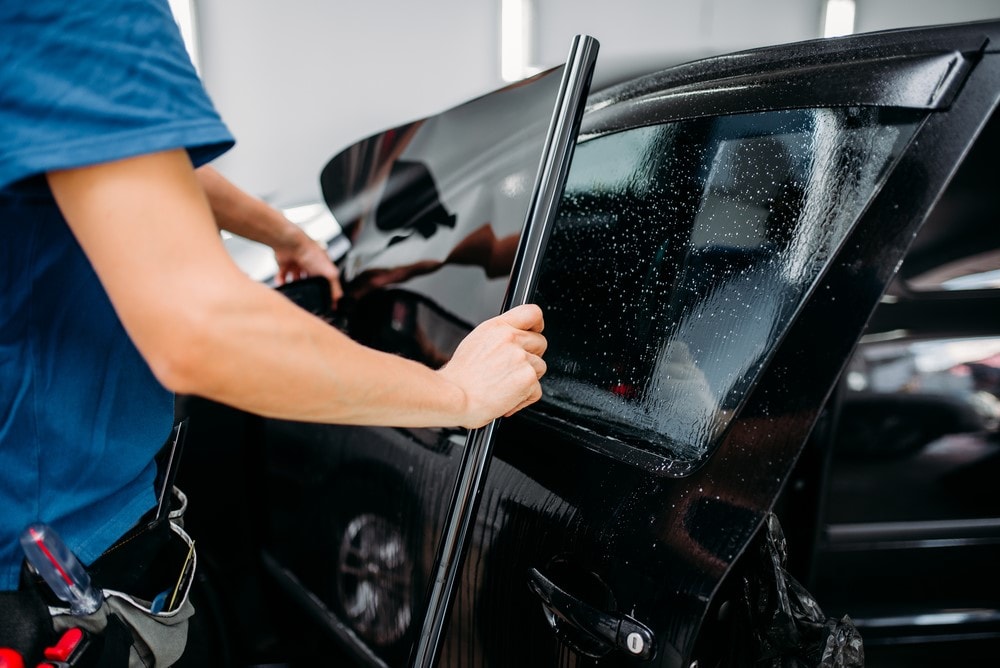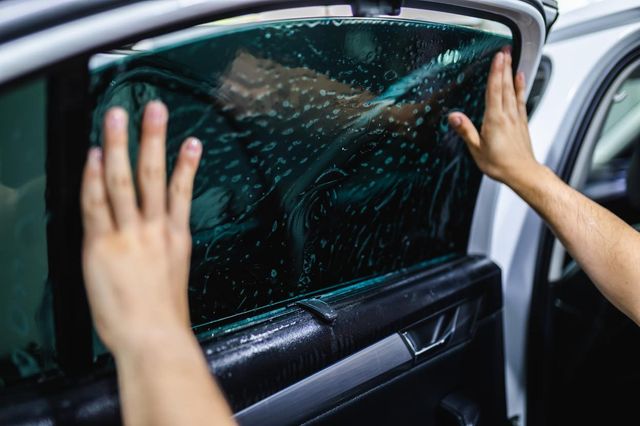Automobile Window Tinting: Enhance Your Car's Design and Privacy
Automobile Window Tinting: Enhance Your Car's Design and Privacy
Blog Article
Window Tinting Laws and Standards: What You Need to Know Prior To Tinting Your Car
Before waging window tinting for your car, it is vital to acquaint yourself with the varied regulations and standards that control this method across different states. These guidelines determine the permitted degrees of tint darkness, commonly gauged by noticeable light transmission (VLT) percentages, and include certain specifications for front windscreens aimed at ensuring road safety and security. In addition, certain territories may supply medical exceptions for people with certifying conditions. Comprehending these complexities can conserve you from prospective legal implications, yet what are the particular policies in your state?
Overview of Home Window Tinting Laws
Home window tinting laws are often based on variant throughout different territories, showing neighborhood regulations and security factors to consider. These laws dictate the acceptable degrees of color darkness and reflectiveness on car home windows, guaranteeing that vehicle drivers keep ample visibility while also securing versus dangerous UV rays and heat.
A lot of policies classify home window tinting based upon the Visible Light Transmission (VLT) percentage, which indicates the quantity of light that can go through the window. Normally, reduced VLT portions indicate darker colors. Regulations typically differentiate between the front, side, and back home windows, with more stringent constraints related to the front windscreen to improve security for both the vehicle driver and other road users.
In addition, some jurisdictions enforce constraints on the reflectivity of the color, avoiding too much glow that can harm presence. Exemptions to these laws might exist for people with specific medical problems requiring extra sunlight security. Conformity with window tinting regulations is vital, as infractions can lead to penalties, required removal of the tint, and prospective increases in insurance policy premiums. Consequently, it is essential for vehicle owners to familiarize themselves with neighborhood legislations before proceeding with window tinting installments.
State-by-State Tint Regulations
Recognizing the particular home window tinting guidelines in each state is essential for vehicle proprietors seeking to conform with the law. Each state in the U.S. has developed its very own set of rules governing window tinting, which can vary substantially. These regulations often dictate the allowable degrees of color darkness, the kinds of home windows that can be tinted, and any kind of clinical exemptions that might apply.
As an example, states like The golden state have rigid restrictions on color darkness for front windows, while others, such as New Mexico, might allow darker tints. Additionally, particular states mandate specific exposure percentages for numerous windows, including the windshield, front side home windows, and rear home windows. It is important for vehicle proprietors to familiarize themselves with their state's legislations to stay clear of potential penalties or fines.
Additionally, some states might require a qualification sticker to be put on colored home windows, showing compliance with state laws. Failing to follow these policies not only risks lawful consequences but can additionally impact security and visibility while driving. Lorry owners ought to conduct thorough research study or speak with neighborhood authorities to make sure complete understanding and compliance with state-by-state color laws.
Allowed Color Kinds and levels
Many automobile proprietors may be shocked to discover that allowed color levels and kinds differ widely throughout various states. Each state has established its own guidelines regarding the allowable darkness and reflectivity of home window color, usually gauged by Visible Light Transmission (VLT) portions. VLT refers to the amount of light that can go through the colored home windows; hence, a reduced percent shows a darker color.

In addition, the kinds of tint materials permitted can vary, with some states prohibiting mirror-like or metal coatings. It is important click over here now for vehicle proprietors to acquaint themselves with their state's specific regulations to make certain conformity. Non-compliance can cause penalties, necessary elimination of the color, or other lawful repercussions, making it necessary to recognize these policies prior to waging installment.
Medical Exemptions for Tinting
While not all states supply allowances for medical exceptions relating to home window tinting, those that do recognize the requirement for particular people to improve presence and comfort due to clinical conditions. Various clinical problems, such as lupus, skin cancer, and specific eye disorders, can provide individuals especially sensitive to sunshine. Subsequently, these individuals may call for darker colors to safeguard themselves from harmful UV rays and glare.

It is essential to note that despite a clinical exception, there might still be limitations on the degree of tint enabled. Conformity with state legislations makes sure that individuals are both secured and within legal limits. Those thinking about clinical exceptions ought to contact their neighborhood Division of Motor Vehicles or equal authority to comprehend the needs and procedures needed to apply for an exemption properly.
Penalties for Non-Compliance
Falling short to follow home window tinting legislations official source can bring about considerable penalties, which vary by state. Police are empowered to provide citations for lorries that do not abide by the defined tinting policies. These charges normally consist of fines, which can range from modest total up to several hundred bucks, relying on the extent of the violation and the state concerned.
In some jurisdictions, repeated offenses may lead to intensifying fines or added charges, such as necessary court appearances. Additionally, non-compliance may require the removal of illegal tinting, commonly at the proprietor's expense. In extreme cases, habitual offenders may deal with suspension of their lorry enrollment till compliance is attained.
Additionally, insurance policy effects might develop from obtaining numerous citations for home window color infractions. Insurers might check out such infractions as a sign of riskier habits, possibly bring about enhanced premiums or trouble in insurance coverage.
To prevent these charges, it is essential for vehicle proprietors to acquaint themselves with their regional home window tinting laws and ensure that their lorry complies (Window Tinting). This positive technique not only prevents legal implications however additionally advertises roadway safety
Conclusion

Many regulations classify home window tinting based on the Visible Light Transmission (VLT) percentage, which suggests the quantity of light that can pass through the window. Conformity with window tinting regulations is critical, as offenses can result in penalties, mandatory elimination of the find more information color, and prospective boosts in insurance policy premiums.Recognizing the details home window tinting regulations in each state is essential for lorry owners seeking to comply with the law. These policies typically dictate the allowed degrees of tint darkness, the types of home windows that can be tinted, and any kind of medical exemptions that may apply.
For instance, states like The golden state have rigid constraints on color darkness for front windows, while others, such as New Mexico, might permit darker colors.
Report this page